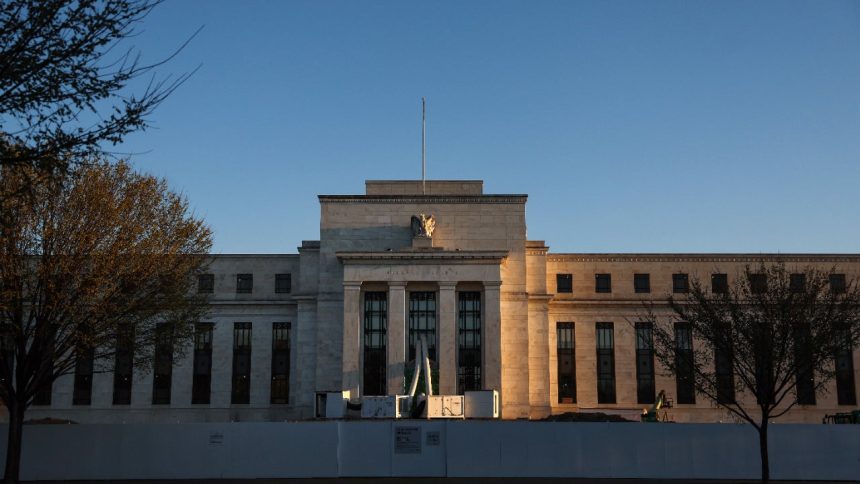The Federal Reserve has made significant inroads in its fight against inflation, but it rose slightly in March to 3.5 percent, up from 3.2 percent for the 12-month period ending in February. In spite of the increase, the Fed decided to maintain its target interest rate in the 5.25 percent to 5.50 percent range at its May 2024 meeting.
In a press release indicating its interest rate decision, the Federal Open Market Committee, the Fed’s rate-setting body, said it “judges that the risks to achieving its employment and inflation goals have moved toward better balance over the past year.” Still, “the economic outlook is uncertain, and the Committee remains highly attentive to inflation risks.”
“The Committee does not expect it will be appropriate to reduce the target range until it has gained greater confidence that inflation is moving sustainably toward 2 percent,” the press release notes.
Fed remains vigilant about inflation, but likely done with rate raises
The Fed began a series of rate increases in March 2022, when inflation was at 8.5 percent, and has lifted up its target rate from 0 percent with a total of 11 rate hikes through July 2023. Since July, the Fed has held rates steady.
Even though the rate hikes had the desired effect of bringing down prices, the Fed remains vigilant in its fight against inflation. In 2022, inflation — the rise in goods and services prices over a sustained period of time — was running at its highest level in more than 40 years. The Fed will not be complacent until it is convinced it has slayed the beast.
In 1980, inflation under Fed Chair Paul A. Volcker reached 11 percent. (At that time, the Fed’s rate hikes pushed the economy into recession, a scenario that hasn’t materialized this time around.) With that lesson in mind, the Fed is now focused on not bringing down its target rate without being certain it has quelled inflation, so that consumers and businesses don’t anticipate higher inflation down the road.
Pandemic-related effects led to inflation
The Fed’s series of rate hikes since March 2022 aimed to combat post-pandemic inflation. With supply chain disruptions and stimulus efforts provided during the pandemic, along with the impact of the war in Ukraine (which affected the price of oil and other commodities), stoking inflation, the Fed had been focused on raising its targeted interest rate to combat the fallout from inflation that proved to be stickier than the central bank expected.
After the coronavirus pandemic began in 2020, the Federal Reserve initiated cuts that brought down its target interest rate to practically 0 percent. That low rate was aimed at spurring consumption and business investment in order to keep the economy’s wheels greased as it recovered from the crisis.
The Fed also stepped in to purchase mortgage-backed securities and Treasury securities, which, too, had the effect of pumping money into the economy and lowering interest rates. It took additional measures as well to prevent financial markets from freezing up.
Now, in what is known as quantitative tightening, the Fed is also gradually shedding its balance sheet of the securities it acquired. This action will suck up money from the economy and further aid the Fed’s agenda by pushing up interest rates due to the reduced money supply.
Employment and inflation goals
The Fed’s actions are guided by its dual mandate of managing both employment and inflation to optimize economic performance. Its aim is to shoot for maximum employment while letting inflation run at 2 percent in the long run, making for price stability.
Back in 2020, the Fed decided it would keep rates low — even as employment rose — to make the labor market more inclusive and allow even disadvantaged groups to get jobs, keeping in mind the lessons learned after the 2008 recession, when inflation did not rise even though employment continued to grow. It seemed the Fed would not start raising rates until 2023, but as inflation concerns surfaced, the central bank started its tightening cycle earlier in March 2022.
Considering that the pandemic-influenced inflation continues to linger and was further fueled by the war in Ukraine, the Fed is now focused on bringing inflation down so that expectations for higher inflation don’t get entrenched in the minds of consumers and businesses. The Hamas attack on Israel in October has also heightened geopolitical tension.
Further, even though rising interest rates have brought down inflation, the labor market remains strong. Employers added 303,000 jobs in March, while the unemployment rate remained basically flat at 3.8 percent. In March, average hourly earnings were up 4.1 percent over the prior 12 months. Additionally, the government revised jobs numbers for January and February, which means 22,000 more jobs were added in those two months together than previously reported.
Consumers anticipate reduced inflation
On the inflation front, it seems consumers are not wedded to the idea that current high inflation levels will stick. A University of Michigan survey finds that in March, consumers expected inflation to be at 3.2 percent in the year ahead, up from an expectation of 2.9 percent in March. The 2.9 percent expectation represented the lowest level in three years for consumers’ inflation expectations in the year-ahead period.
Impact on credit card interest rates
What all of this means for cardholders is that you are likely to see your variable card interest rates remain at current high levels for a while. Your credit card rates are tied to the prime rate, to which issuers add a markup to arrive at your card’s interest rate. The prime rate, in turn, is based on the Fed’s target interest rate. This means that when the Fed starts hiking its target rate, the prime rate also goes up.
And when the prime rate goes up, variable interest rates soon follow. In fact, interest rates on credit cards had been moving up over the last two years, before it started dropping again a few weeks ago. The national average APR was 20.66 percent in late March, down slightly from the 20.75 percent it was in March.
That means you should start managing your credit card balances more strategically. If you carry a balance, make plans to pay it off. If you will be carrying a balance for a while, you could transfer it to lower-interest options, such as a balance transfer credit card with a 0 percent intro APR.
You might also consider taking out a personal loan to pay off your credit card if that offers a better deal for you. Home prices have been on a tear in recent years, and homeowners could even weigh getting a home-equity loan to pay off credit card debt. Another option would be to take on a side gig to earn additional income to pay off your debt.
The bottom line
While the Fed maintained its target rate in the 5.25 percent to 5.50 percent range at its March 2024 meeting, the central bank hasn’t yet declared victory in its fight against inflation. However, it seems the Fed is done raising its target rate in this cycle and is likely to start bringing it down later in 2024.
Since variable credit card interest rates are tied to the prime rate, which is based on the federal funds rate, consumers should be prepared for their variable interest rates to continue to remain at current high levels for some time. That means you should take strategic action if you carry credit card balances so that you pay the lowest interest rate you qualify for.
Read the full article here
















